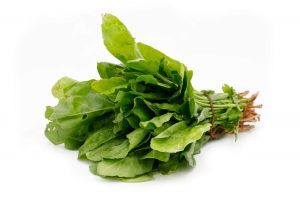- Botanical Name & Family: Spinacia oleracea L., Amaranthaceae (formerly Chenopodiaceae).
- Plant Description: Leafy green annual (rarely biennial) plant, up to 30 cm tall. Leaves are alternate, ovate to triangular. Inconspicuous yellow-green flowers mature into lumpy fruit clusters. Dioecious (male or female flowers on separate plants).
- Cultivation Tips: Cool-weather leafy green, best grown in early spring and fall. Direct sow seeds 1.2 cm deep, 5 cm apart. Thrives in sun to partial shade. Tends to “bolt” in hot summer temperatures. Susceptible to damping-off and aphids.
- Ayurvedic Description: Cold potency (Sita), slightly astringent. Heavy (Guru) and sticky (Picchila) properties. Balances Pitta, can aggravate Vata (unless cooked with warming spices like cumin/ginger). Good for anemia, blood purification, digestion, and skin health. Its Picchila property is believed to reduce hair dryness and hair loss.

Nutritional profile of seasonal vegetable (per 100g raw edible portion):
| Vegetable | Botanical Name | Calories (kcal) | Carbohydrates (g) | Protein (g) | Fat (g) | Fiber (g) | Key Vitamins | Key Minerals |
| Palak (Spinach) | Spinacia oleracea | 23 / 7 | 4 / 1 | 3 / 1 | <1 / 0 | – / 1 | A (52% DV), C (31% DV), K (403% DV), Folate (49% DV) | Mn (39% DV), K, Fe, Mg |
